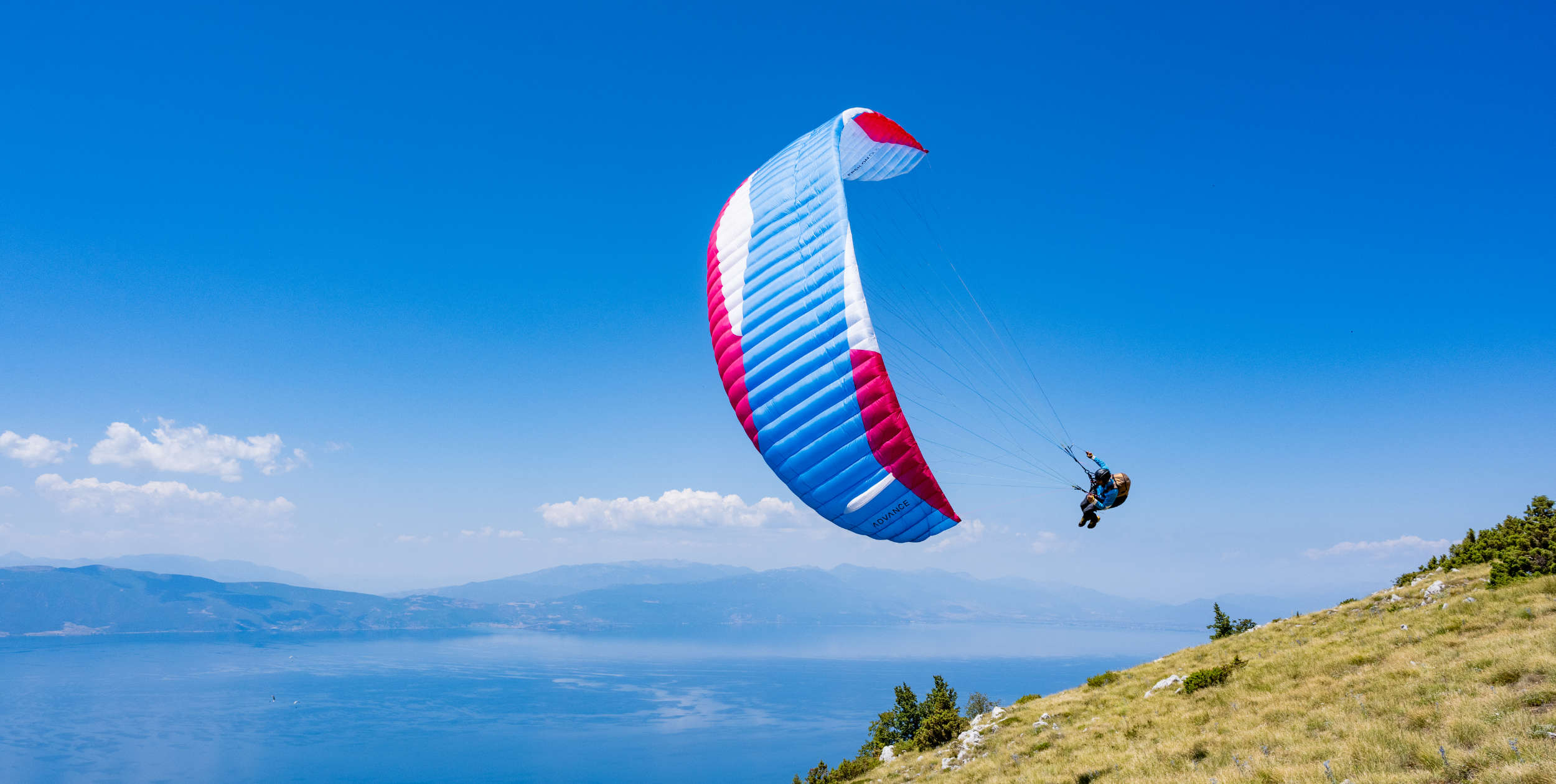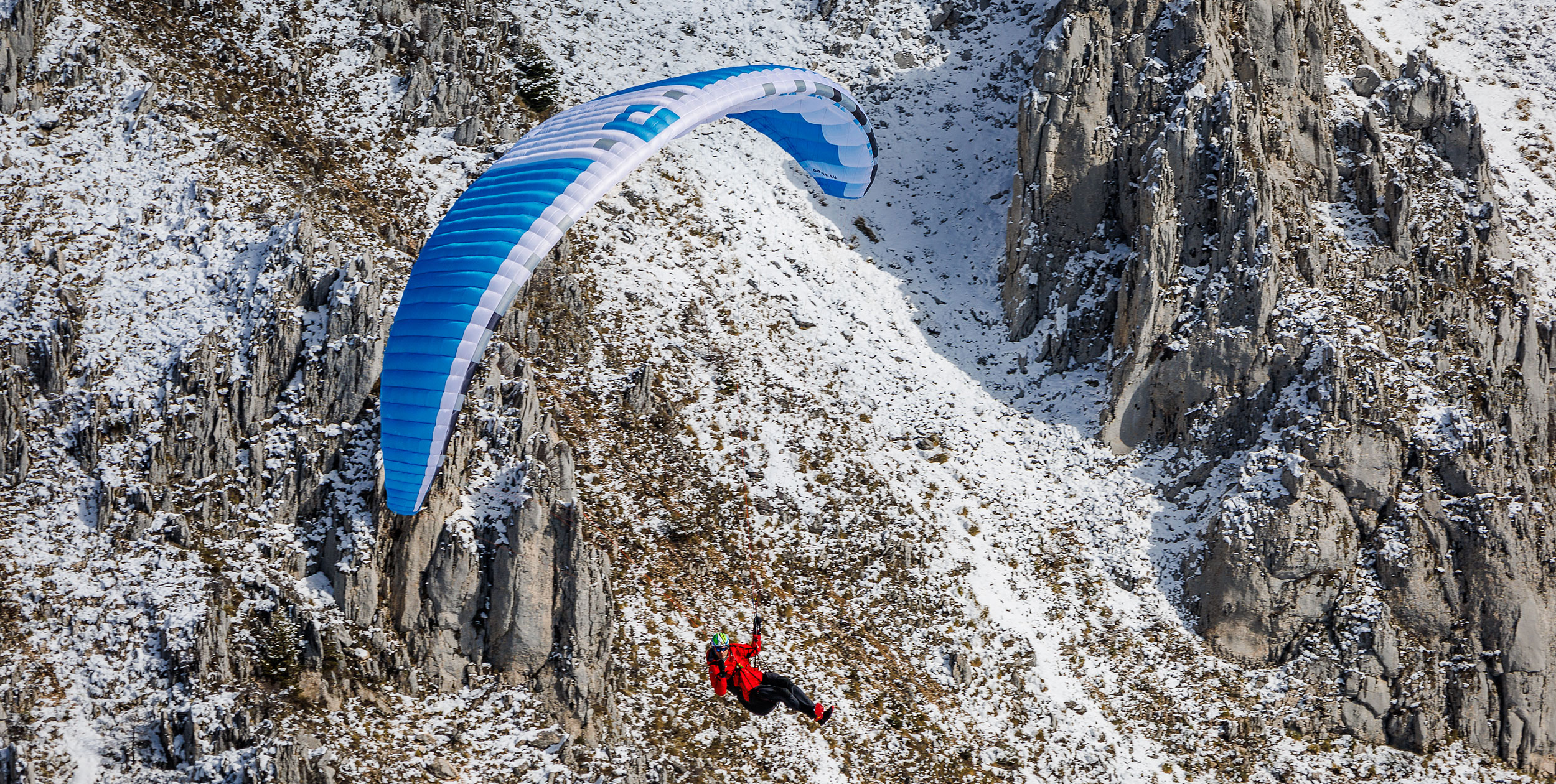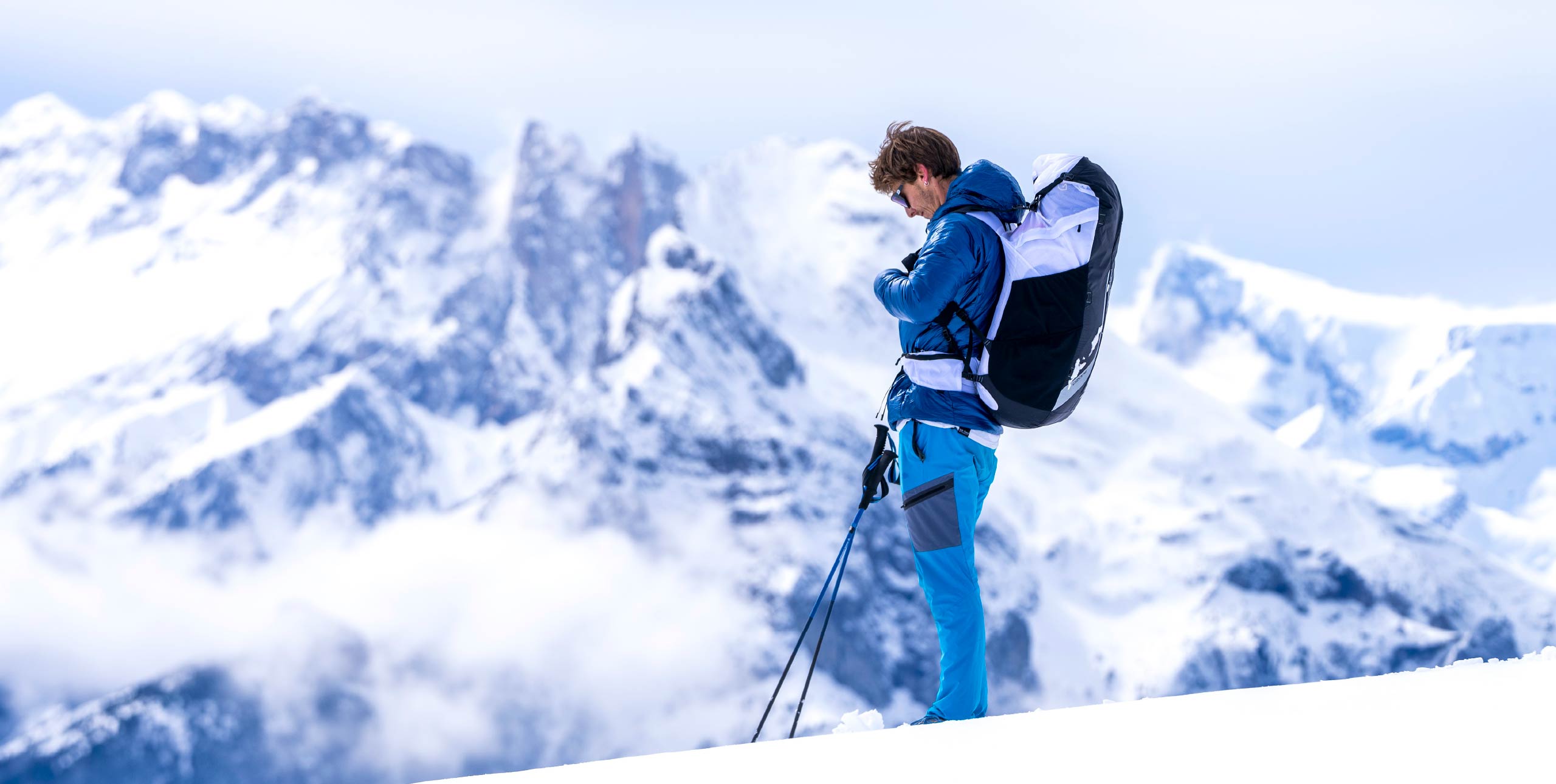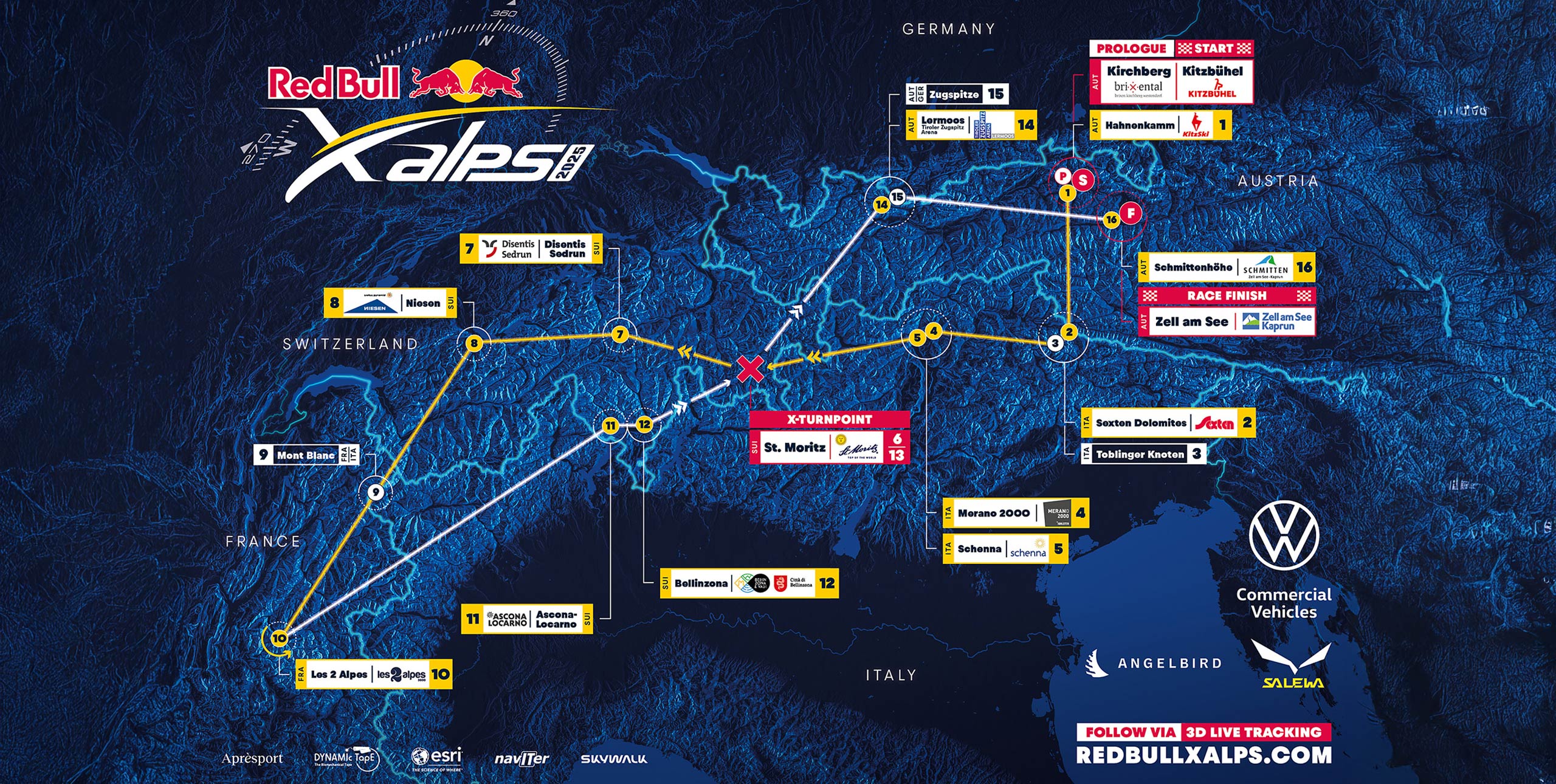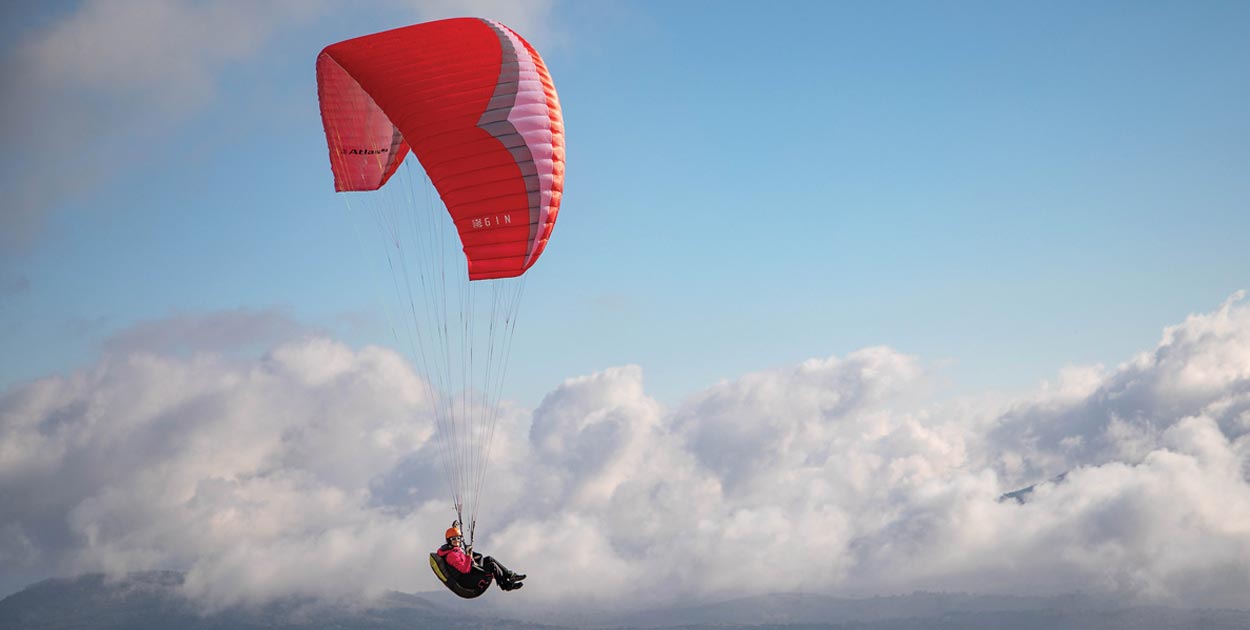
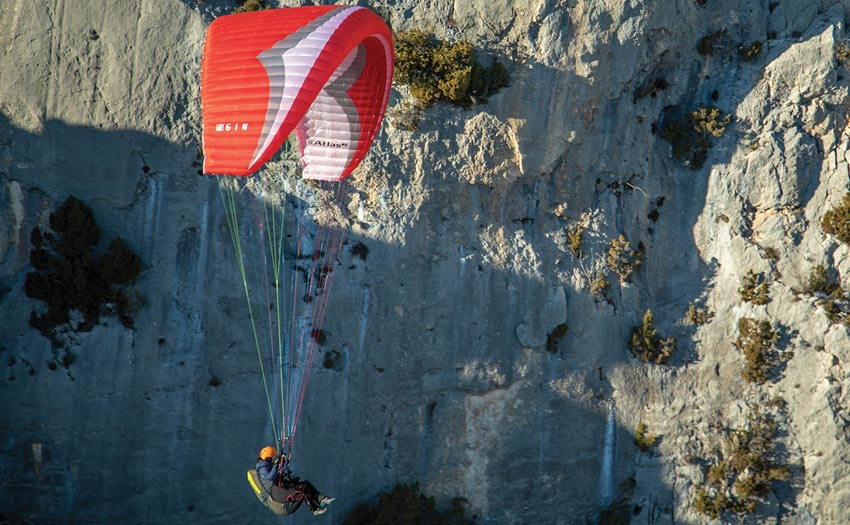
Charlie King flies the new Gin Atlas 2, a low-stress, high-fun EN B paraglider aimed at first-time pilots to weekend warriors.
Gin’s Atlas 2 came out in 2018, replacing the 2013 original. Gin describe it as a high-fun, low-stress easy intermediate wing, suitable for beginners but equally aimed at more experienced pilots who want to fly XC with low risk and high fun factor.
It is certified EN/LTF B, and Gin say it’s safer than the original Atlas, coming “at the very low end of the EN-B category in terms of pilot demands”. There is a new XXS size (21.6m2 for 55-75kg), which did not exist with the original. The other five sizes, XS to XL in 22.9-31.62m2 for 65-125kg, are similar to before.
If you look only at the numbers on the specs tables, the Atlas 2 looks very like the original. It still has 47 cells and an aspect ratio of 5.21. The Atlas already had fewer lines than previous designs, EPT (equalised pressure technology) and an elaborate internal structure.
What has changed with the Atlas 2, say Gin, is down to new calculation methods and better software, and manifests itself as smoother, cleaner surfaces and a better-tensioned leading edge. It also has narrower risers and different cloth, so it’s around 0.5kg lighter, which has benefits for its handling as well as the pilot’s back (Gin are working on a lightweight version too). Gin say these things add up to a more solid, safer wing with better performance.
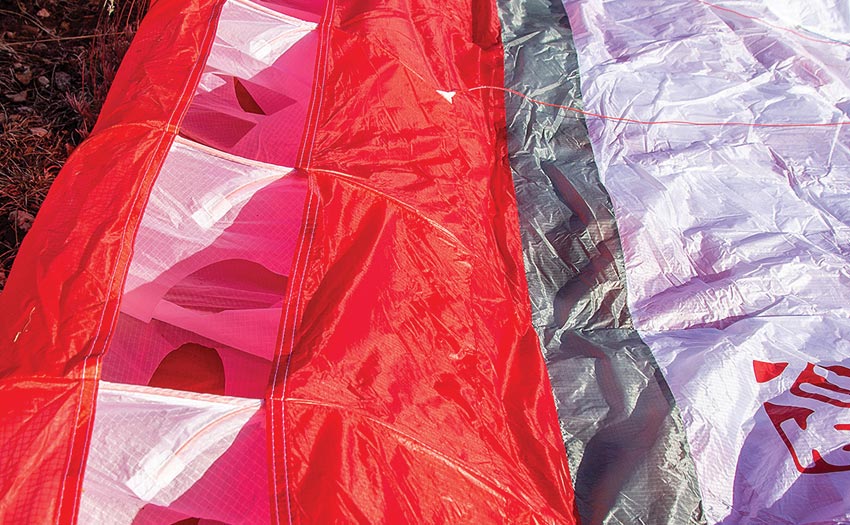
Construction
The glider has slim and neat 12mm risers, with split-As. All the lines are sheathed, and the A-risers and lines are red so they are easy to locate and the wing is easy to sort on launch. It looks well finished and high quality, from the Harken speedbar pulleys to the little Gin-branded plastic inserts inside all of the line-attachment maillons.
The brake handles are lightly padded and comfortable, and they use magnetic keepers, which I found fell off a bit too easily but that’s a small point. The brake lines run through ceramic rings, so there are no squeaking pulleys.
As noted above, the cloth used is lighter than on the Atlas: Porcher Skytex 38 on top, with Dominico D20 (34g/m2) on the under-surface. The nylon supporting wires are short and soft, and Gin say you don’t have to concertina pack the Atlas 2, but it will last longer if you do.
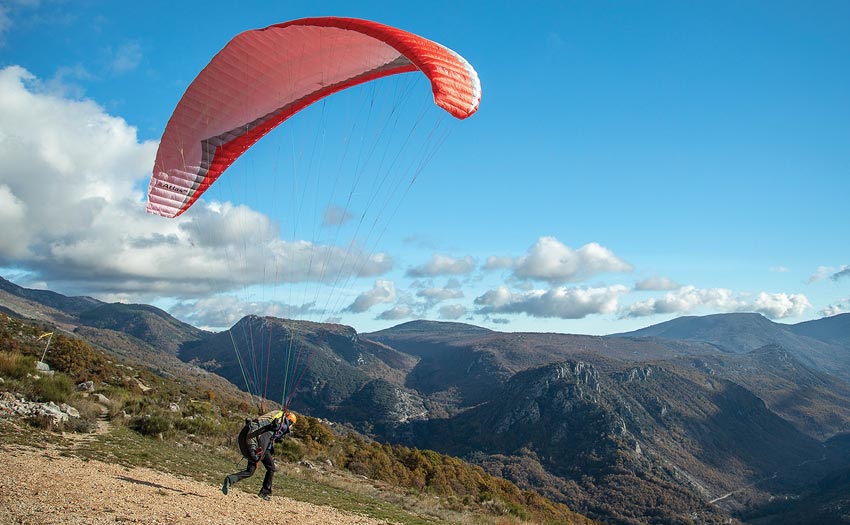
Sizing
It all sounds very appealing. Which size though? The weight ranges on the different sizes overlap by ten kilograms at either end, posing something of a dilemma for the indecisive but meaning you never have to fly a wing right on the edge of its weight range. (The S and M sizes have an additional 5kg extended weight range at the top limit too).
I fly at around 70kg, so I’d be near the top of the XXS, or near the bottom of the XS. I’ve always thought it better to load a glider up, particularly for south-of-France conditions, making it a bit more resistant to deflations, a little bit faster, more receptive to weightshift and easier to put where you want it. In short, more control.
Gin test pilot Michael Sigel advised me that the glider does behave differently depending on wing loading, and he finds it much more fun to fly at the higher end of the weight range. The choice should have been obvious. However, Gin France had an XS demo available but no XXS. Patience is not a virtue I am blessed with, so I took the available XS and promised to experiment with ballast and see how it felt.
Well, obviously ballast feels heavy if you’re carrying it 45 minutes up a hill, so on my first outing I decided to leave the big wobbly bag of water behind, only to arrive on launch and regret that decision. Flying Gréolières in winter is a little bit like Forrest Gump’s box of chocolates. You never know what you’re gonna get, even when you’re stood on launch. I stood huddled with other pilots, nay-saying with the best of them. It looked and felt a bit windy, and words like “sous le vent” (lee side) were being uttered.
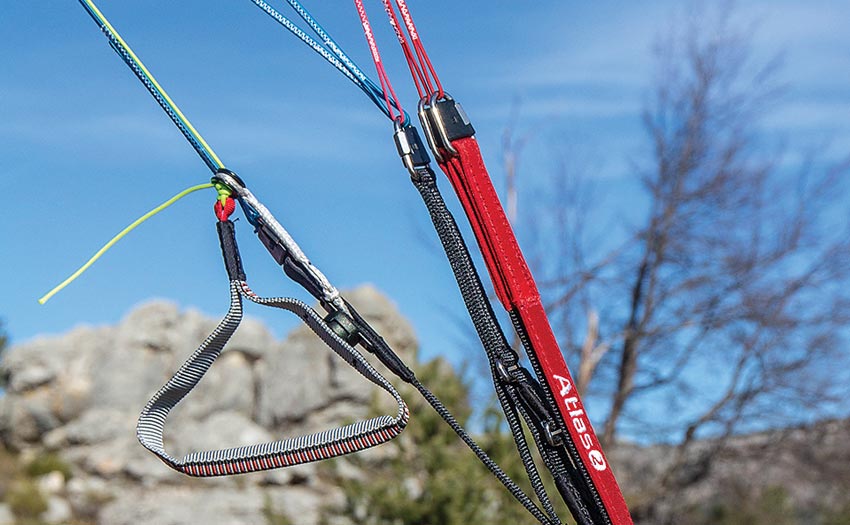
In the air
After the wind dropped a bit a pilot took off, turned left and headed to the quarry, where he started to climb. He was definitely surviving, and also going up. So others followed. Thirty minutes later I was at the top of the ridge, bobbing along the bottom of the airspace towards Coursegoules, with pilot friends and vultures dotted about all over the place, having the best flight I’ve had in ages.
The occasional cu’ popped in the otherwise blue sky, out of reach in the airspace, just to make sure we all noticed how high base was. Vultures circled in the thermals alongside and the views were stunning. My worries that the wing might be a little bit big and a little bit slow evaporated.
The glider is designed for beginners, and as such it should be easy to launch. It is. Forward-launches, even in a light backwind, are stress-free, and reverse launching is straightforward. The wing rises easily overhead but not too fast, continuing to rise even if you stop pulling but it doesn’t overfly. It stops overhead and waits for your next instruction, which is all very relaxing.
In all I flew the wing for over ten hours in winter conditions which varied from light and stable (short top-to-bottoms) to two-and-a-half hour thermalling flights in glorious conditions, although it’s not the right time of year for really pumping strong thermals.
From that first flight I found the Atlas 2 to be very comfortable and intuitive. For me the brake pressure is just right, not too heavy or too light, and there is plenty of feedback both through the brakes and the harness so thermalling is easy.
It seems to climb very well, and its pitch stability makes it feel very safe and comfortable in the choppy stuff. I found it nicely agile, too. It will happily make flat and efficient turns, or you can dig it in harder and bank it up if you need to without feeling as if you are in danger of spinning or stalling it.
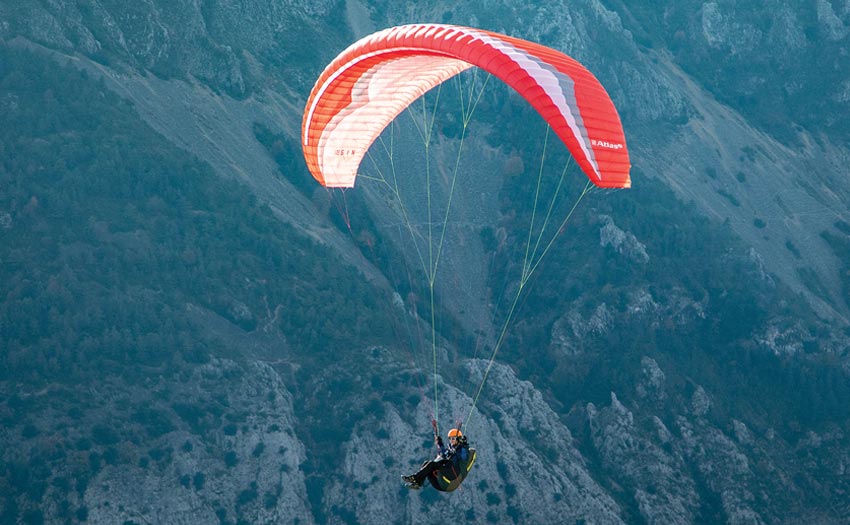
On glide
There is plenty of speed, too. Another pilot commented that it seems to “truck along” nicely, and it manages very well in reasonably windy conditions.
I took the TAS probe out on a light-wind day with 6kg of ballast so I was just above the middle of the weight range, and measured a trim speed of 35km/h. This is typical of most gliders, irrespective of class. Pushing full bar, which isn’t a huge travel, brought the speed up to 42km/h. I would expect if I was flying the smaller size glider, or was closer to the top of the weight range that this would be more like 44-45km/h, which is again typical of its class.
Going by feel, it didn’t feel slow, even loaded to only halfway and in reasonably windy conditions. I didn’t feel I was at much of a disadvantage to my friends on high-Bs, even, for playing around in thermals and ridge lift in wind, nor did I notice any calamitous degradation in glide with the bar.
Big ears are easy to pull in – there is a split-A riser – and the glider is stable with them in. The ears roll out on their own when you let go of the outer A-risers.
Even towards the bottom of the weight range with no ballast, I didn’t feel the glider was slow or bobbing around at the whim of the wind. I flew most often around the middle of the weight range, and enjoyed every flight.
Conclusion
I certainly fall into one of the target groups for this wing – I have been flying for years but I rank feeling safe and relaxed very highly, although I want a wing that is responsive and performant. For me the Atlas 2 does everything it says it does, and it’s perfect for that pilot.
If I were to buy this wing (and I would) I would try the smaller size as well, but not because anything felt amiss with the one I was on, certainly not in the conditions I flew in, but because Gin say they recommend their gliders to be flown in the middle to top of the weight range and because maybe in full spring/summer conditions I’d notice the difference more!
I know it disappoints readers to only hear how good the wings we test are, but I’m afraid it’s just how it is in this case. The Atlas 2 was made to be an easy and safe wing that beginners can fly and more experienced pilots can love, feel safe on and fly cross-country on, and I am certain it does all of these things. Honestly, I loved it!
MANUFACTURER’S SPECIFICATIONS
Gin say: “Comfort with enough performance in climb and glide to keep a smile on your face”
Use: Soaring, thermalling, cross country
Pilot level: New and intermediate pilots
Sizes: XXS, XS, S, M, L, XL
Flat area (m2): 21.61, 22.89, 24.94, 27.08, 29.31, 31.62
Certified take-off weight (kg): 55-75, 65-85, 75-95, 85-105, 95-116, 105-125
Glider weight (kg): 4.5, 4.8, 5.1, 5.4, 5.8, 6.2
Cells: 47
Flat aspect ratio: 5.21
Certification: EN B
Originally reviewed in Cross Country Magazine issue 199 (May 2019)
To stay up to date and read our reviews first, subscribe to Cross Country


